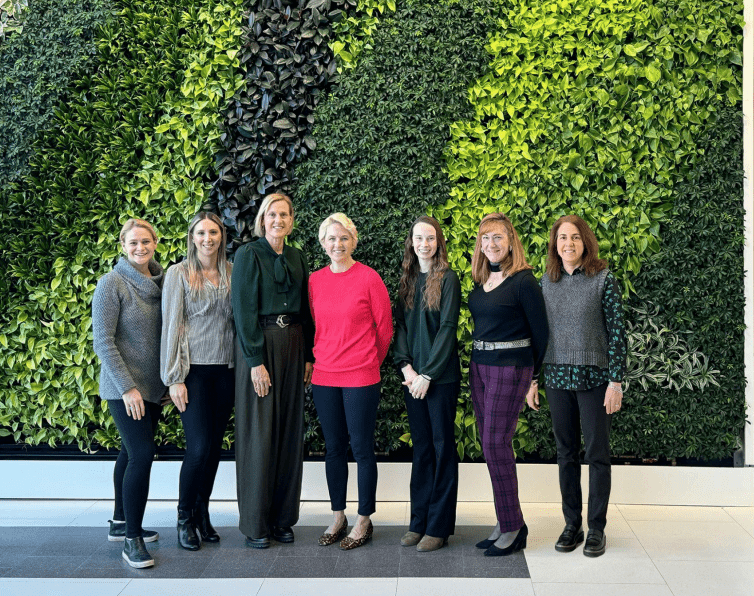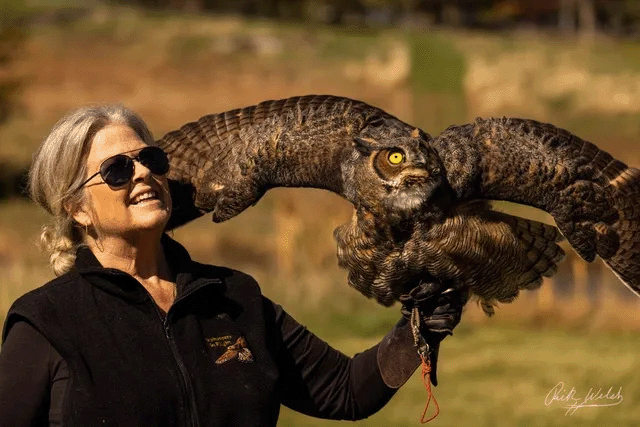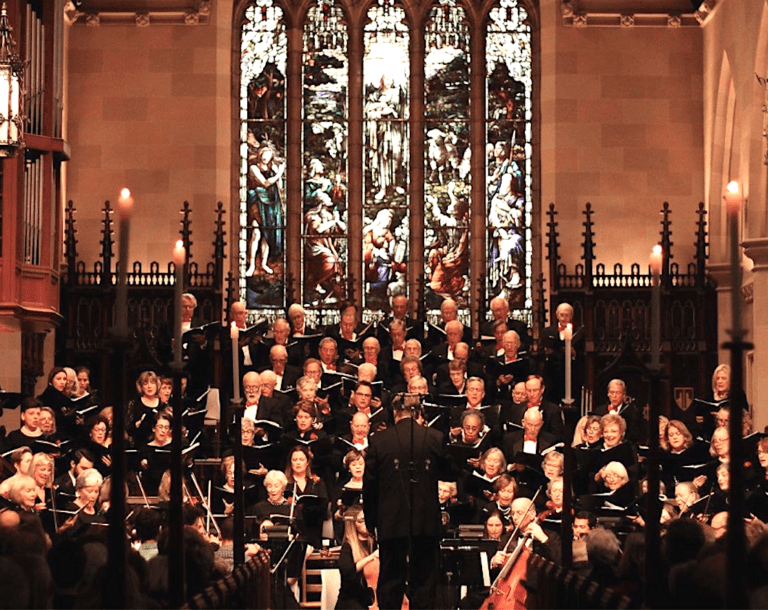
By Anne W. Semmes
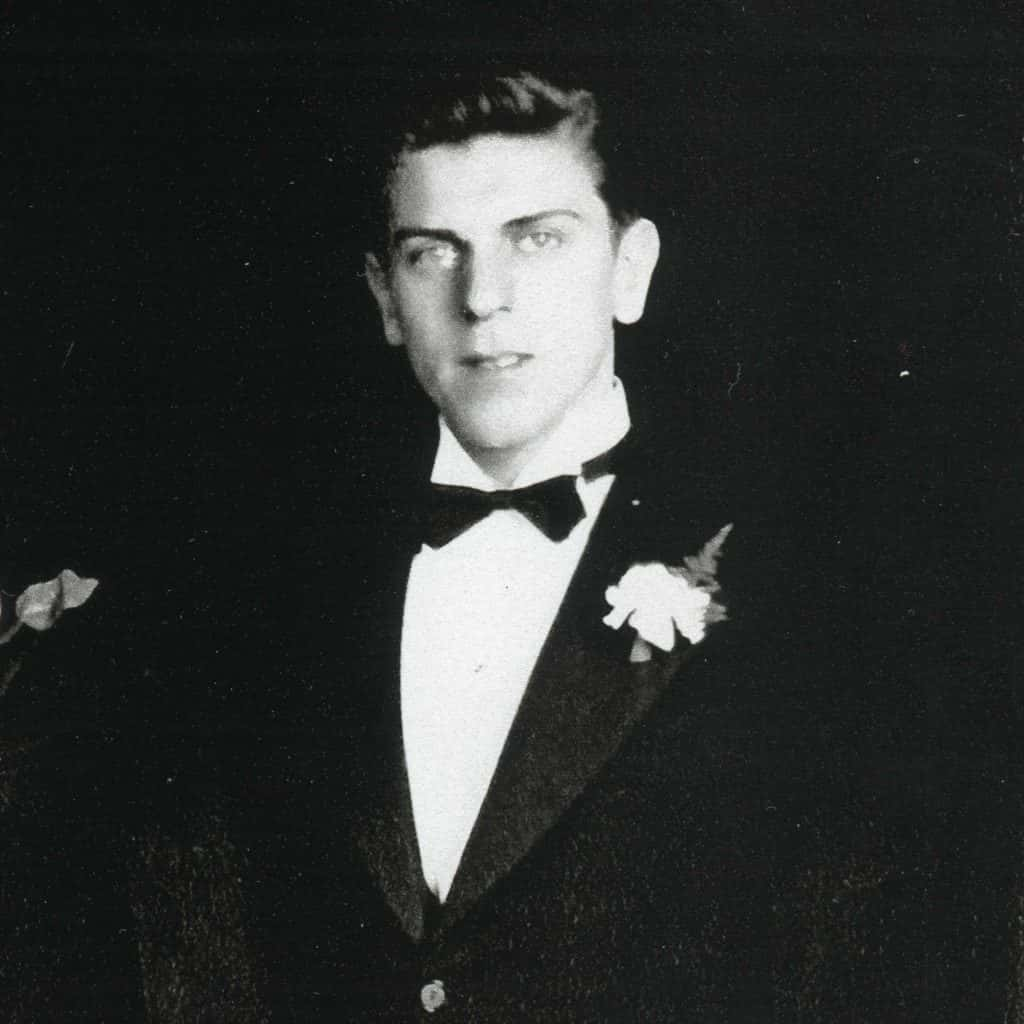
Never in her “wildest dreams” did Cos Cob resident Katherine LoBalbo imagine a video featuring the letters written by her late great uncle Charlie Rich that she donated to the Greenwich Historical Society (GHS). But there it was in all its five-minute-plus glory up on the GHS website in time for Memorial Day. The “Letters from Sgt. Rich” video tells the too-short life story of Cos Cob native Charlie Rich, an Army Ranger, trained to climb the cliffs on the Normandy beaches, but felled during the D-Day landing, at age 22.
The creator of that video, Christopher Shields, Curator of Library and Archives at the Historical Society was more than happy to honor Sgt. Rich, he says, “in this small way. It’s so important that we don’t forget the incredible sacrifices that have been made.”
We’re introduced to Charlie Rich dressed as best man for brother George Rich’s wedding to Katherine “Kitty” Bologna Rich, grandparents of Katherine LoBalbo. Charlie at war would write his letters to George and to wife Kitty.
We see those V-Mail letters and learn how Charlie lived before the invasion with an English family, of his experiencing that country’s severe rationing and constant power blackouts, and how cheered he was by their young daughters on what would be his last Christmas.
“You get such a sense of his humor and personality from these 12 letters,” notes grandniece Katherine who inherited Charlie’s letters from her grandmother Katherine Rich.
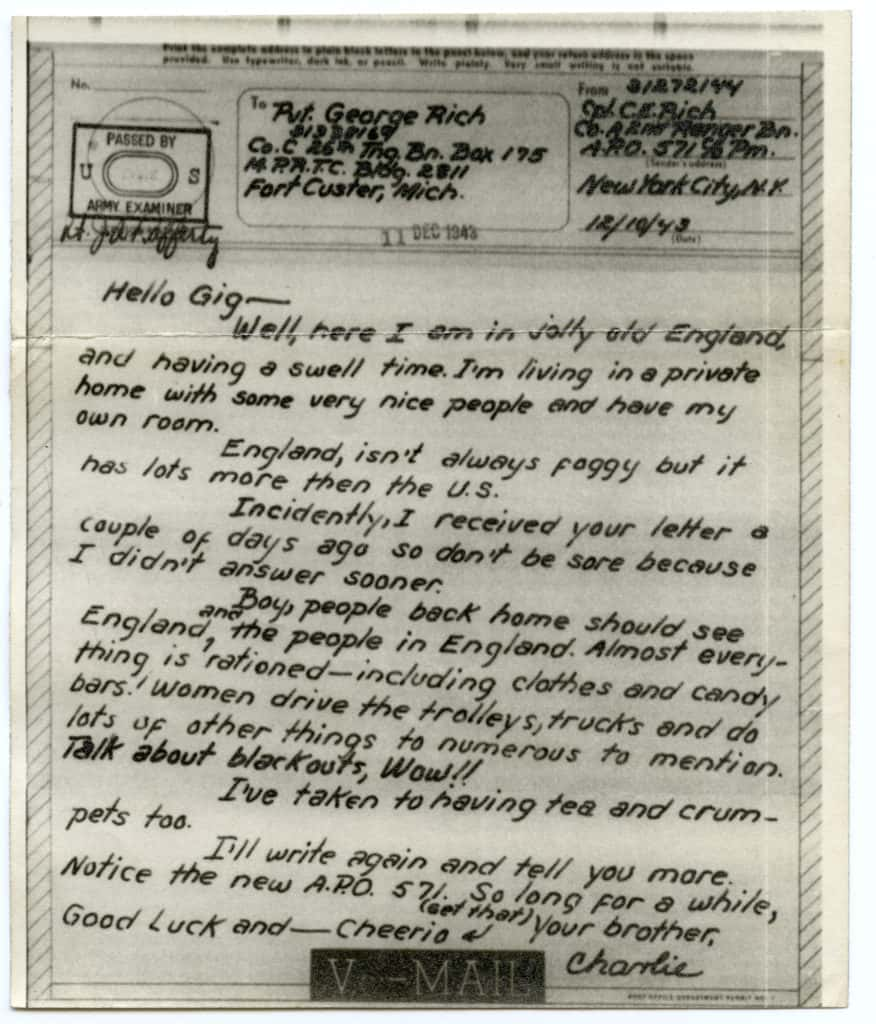
In her growing up years, young Katherine had not heard much talk of her great uncle Charlie but seeing the letters, and being a long time GHS member, she saw those letters as part of Cos Cob history. “I could save that personality, and how he was getting the local language in his letters, signing them ‘Cheerio.’” And how he discovers over there, “Women drive the trolleys, trucks and do lots of other things to numerous to mention.”
“I have three-year-old and one-year old daughters,” says Katherine, “and they are fifth generation Cos Cob, and they can someday walk down to the Historical Society when they have to do their history report. Can you imagine the beauty of that?”
Those girls will learn too thanks to Christopher’s illustrative video the innovative way those war letters were delivered as V-(for Victory) Mail, being first scanned for security, then photographed, with the negatives only printed when they reached their destination. All this to save on valuable shipping space for war supplies.
Thank you, Christopher for those images that you found to tell that V-Mail sending process! For, I have V-Mail letters my father wrote to his sister during WWII as he made his way from North Africa into Italy, and I inherited those dozens of letters from my aunt.

How precious they are! My father, Thomas J. Semmes, served in the Army Air Corps Intelligence of the 9th Fighter Wing. He spoke little about the war and died too young, so reading those letters – and they are voluminous letters – has helped me discover not only his extraordinary experiences but how he viewed his family and friends.
Christopher says it best in his video: “Personal correspondence is among the most special primary sourced documents that you will find in archival collections. They often give a unique perspective on family relationships and current events, personal challenges and emotions, and just the little tidbits of everyday life at the time that the letter is written.”

Christopher’s fascination with the personal experience of others in the Archives includes the personal diaries of a young Greenwich girl, Annie Brush, written during the WWI years. “In them,” he shares, “she insightfully chronicles her experience of this tumultuous period, offering many details of local activities as well as the interests and anxieties of any person her age.”
And then, even further back there is correspondence of Civil War soldier Silas E. Mead. His letters “offer a view into the experience of a young man far from home for the first time and his concerns about his family and friends back home. He includes details about the camp life of soldiers and other aspects of the war. It is a very important collection.”
For those with family letters they would wish to preserve, Katherine LoBalbo recommends the Historical Society.
To inquire further you can find Christopher Shield’s contact information on the Historical Society’s website at Greenwichhistory.org.

